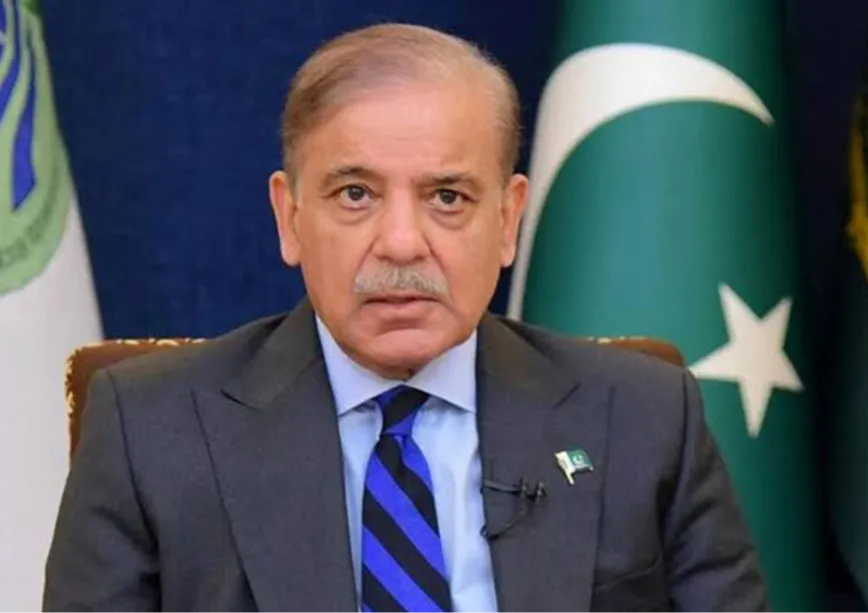
Normally in Pakistan, the political commentariat starts speculating on the longevity of every new government within a few weeks of it assuming office. But obituaries of the Shehbaz Sharif-led ‘Hybrid Pro Max’ regime started being drafted even before the new Prime Minister was selected. Hardly anyone expects the new government to last its full term. The maximum time in office that most pundits are ready to give this unwieldy coalition—more of a shotgun marriage forced by the Pakistan Army—is between 18 and 24 months. Given that the average tenure of a Prime Minister since 1985 (excluding caretakers) has been around two years and four months, the 18-24 month prediction is well within the ballpark. Add in the monumental challenges confronting the new government, the lack of popular support it enjoys, the pulls and pressures of coalition politics, and the overbearing attitude of the military, which is underwriting and underpinning the new dispensation, and it becomes very clear why no one expects this government to last the distance. Even so, notwithstanding the usual political buffeting, conspiracy theories and rumours of imminent demise, as long as it survives, the Shehbaz government will neither be fragile nor unstable.
The maximum time in office that most pundits are ready to give this unwieldy coalition—more of a shotgun marriage forced by the Pakistan Army—is between 18 and 24 months.
No agency of its own
The Shehbaz government can be called weak only in the sense that it has very little agency of its own. It is a government cobbled together by the military establishment, which is pretty much calling all the shots. All crucial ministries—finance, interior, foreign—will be manned either by people endorsed/recommended by the Army, or will have minders placed in them to keep a solid control over them. The real government in Pakistan is now the Special Investment Facilitation Council (SIFC). It was initially set up to facilitate investments but has taken over virtually all the decision making and policy framing functions of the nominal government. But it is the Shehbaz government that will front all the difficult decisions taken by SIFC, and also take the political fall for them. Depending on what spin someone wants to give, the government can either be seen as weak because it is being led by the nose by the SIFC, or, it can be seen as a strong government implementing the most onerous decisions at great political cost.
On paper, Shehbaz is comfortably placed as far as the numbers game goes. He enjoys the support of over 200 members in the 366-member National Assembly. With the allotment of reserved seats, which would have otherwise gone to Imran Khan’s party, Shehbaz could soon have a two-thirds majority in the House. Compare this to Imran Khan who barely managed a majority in 2018. Of course, a parliamentary majority has only a notional relevance in Pakistan. It doesn’t matter if someone has a two thirds majority, or has a bare majority mark, or even is in a minority. As long as the government enjoys the support of the army, it is stable. The day it loses that support, the numbers in National Assembly become irrelevant. The thing is that, for now, and the foreseeable future, Shehbaz Sharif has the military backing him completely. He will, therefore, be firmly ensconced in the Prime Minister’s office, as long as there is no falling out with the military.
With the allotment of reserved seats, which would have otherwise gone to Imran Khan’s party, Shehbaz could soon have a two-thirds majority in the House.
Mutual Dependence
What goes in Shehbaz’s favour is the fact that the current army leadership needs him as much as he needs them to stay in power. The cabal of generals led by Gen. Asim Munir doesn’t have a whole lot of options to play around with, even less so after the election results in which Imran Khan emerged winner against all odds. That the results were changed and the mandate stolen doesn’t distract from the reality that neither the military nor the current political dispensation enjoy the support of the people. Both for self-preservation, and for reasons of state survival, they have no choice but to stick to each other. Destabilising or displacing the current government is a non-option because there is no alternative unless Munir is ready to smoke the peace pipe with Imran Khan—almost an impossibility as things stand. Given the public mood, which will become more hostile as more bitter pills are administered to the people, the mutual dependence between the Army and the government will only increase. This will make them even more dependent on the military. But what this also means is that there is space for negotiation and bargaining between the ‘selected’ regime and the military overlords.
Friction Points
Although Shehbaz Sharif will not mind being utterly obsequious to the Army—a perfect yes-man, if ever there was one—there will be a temptation, even a kind of reflex, in Nawaz Sharif to push some of his pet agendas, resist some of the diktats and regain some agency for the party and government. In some ways, playing mediator and bridge between his political boss Nawaz Sharif, and his boss in government Gen. Asim Munir, will be Shehbaz Sharif’s biggest political challenge. If he can manage this tussle between Nawaz and Munir, and if all other things remain the same, the current arrangement should at least last for the next 18 months i.e. until October/November 2025 when the question of an extension for Gen. Munir will come up. The extension issue could create friction between the Army and the Sharifs, especially if Nawaz is not inclined to give it.
Playing mediator and bridge between his political boss Nawaz Sharif, and his boss in government Gen. Asim Munir, will be Shehbaz Sharif’s biggest political challenge.
In politics, however, the other things don’t remain the same. A lot will, therefore, depend on how bad the economic and security situation becomes and how the street and the soldiery reacts. Beyond a point, the Munir junta will not be able to push things through. Dissent from within the military is dangerously high. There are reports that the military brass is monitoring WhatsApp groups, issuing warnings to officers and men who are seen as silent dissenters, and there are unconfirmed reports of court martials of senior Pakistan Air Force officials—all of which indicate that something is happening below the surface. If things reach the tipping point, then there is a very good chance that any extension for Munir will simply be untenable. There will be enormous pressure from within the Army to replace him. And, if Munir goes, the political house of cards he has put together will come crashing down. In a way, the fates of Munir and Shehbaz are now tied to each other.
Coalition partners with limited options
As far as the coalition is concerned, it isn’t going anywhere. The Pakistan People’s Party (PPP) will keep making noises but will keep supporting the government. Every disagreement will be a ploy to extract something out of the federal government and get some good old-fashioned virtue signalling to limit the damage to its own vote bank. But beyond that, the track record of the PPP has been to be as obsequious to the military establishment as Shehbaz Sharif. Asif Zardari, who will be sitting in the Presidency for the next five years, has perfected the art of making a show of defiance and then quietly folding once his bluff is called. In any case, the PPP has virtually no presence outside of Sindh in Punjab, despite vigorous efforts to increase its vote bank, the PPP remains where it was in 2018. And in Balochistan, it won because of a blatantly rigged election. The party knows that if fresh elections were to be called, it would end up with less than it has now. Plus, it might have to contend with an Imran (or one of his cronies) at the helm—hardly a very palatable prospect. The other big coalition partner, Muttahida Quami Movement (MQM) too doesn’t have any real political capital to leverage. Virtually all its seats were gifted to it by the ‘deep state’. It will do what the Army tells it to do.
Asif Zardari, who will be sitting in the Presidency for the next five years, has perfected the art of making a show of defiance and then quietly folding once his bluff is called.
PTI Challenge
At the political level, the biggest challenge will be on how to handle the resurgent Pakistan Tehrik-e-Insaf (PTI), which has won 93 seats. Although the PTI has been robbed of its reserved seats (not to mention the other seats where its winning candidates were declared losers), it is unlikely to be a docile Opposition. In 2018, the then Opposition, led by Pakistan Muslim League Nawaz (PML-N) and PPP, had huge numbers but didn’t put up any fight because they had been warned by the military establishment to not create trouble. The PTI is unlikely to be as obedient or compliant. It will agitate the street and campaign hard on social media, building narratives against the incumbents who, in any case, will be perpetually on the back foot because of a lack of legitimacy and rising anger on account of economic difficulties.
Over the next few months, there will be a lot of fire and fury in political rhetoric, speculation galore, but this government is not going anywhere anytime soon. How much it controls things and how much it is controlled by the military establishment will depend on how it bargains and negotiates, as well as on how much fiscal and political space is available to it. But any predictions of its demise are highly exaggerated for at least a year, maybe even two. After that, all bets are off.
Sushant Sareen is Senior Fellow at the Observer Research Foundation.
The views expressed above belong to the author(s). ORF research and analyses now available on Telegram! Click here to access our curated content — blogs, longforms and interviews.




 PREV
PREV


